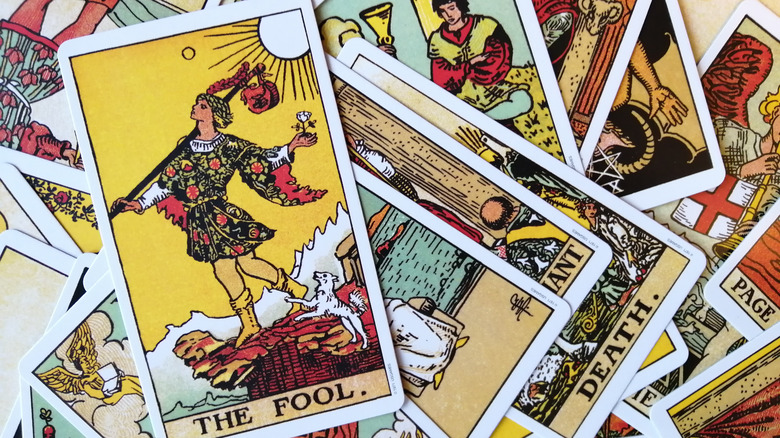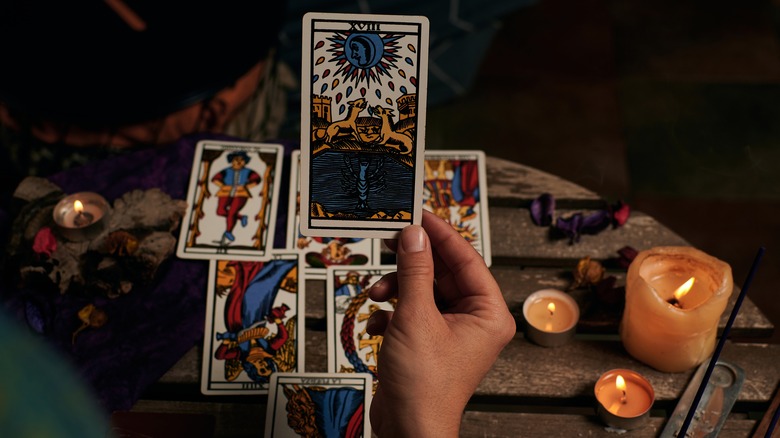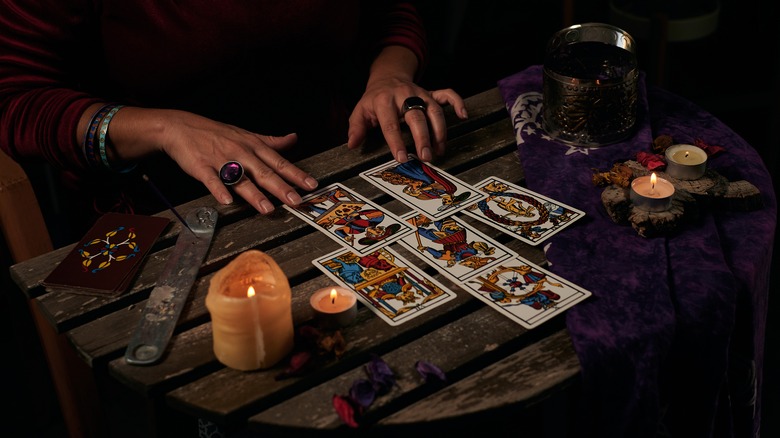The Origin Of The Word Tarot Might Have Some Believers Upset
When it comes to making crucial decisions, particularly vis-à-vis relationships, career, and health, or seeking to fix pressing life issues, some people turn to tarot. Even celebrities like Gwyneth Paltrow have been known to hire professional tarot card readers (via People magazine) for their guests to advise them on their life's constant changes.
"Tarot readings help a person understand what he or she needs to know about a particular situation. Decks are best used as a tool of inner wisdom and guidance, as readings give a person insight to past, current, and future events based on the person's current path at the time of the reading," affirms Gaye Weintraub, founder of the holistic wellness company Soul'ed Out, per Insider.
There's no one way or right methodology to read and interpret tarot cards. Since every reader and every reading is different, tarot can be entertainment for some and therapy for others. So, what are tarot cards exactly? Where did they come from?
Evolution Of Tarot: From A Card Game to A Fortune-Telling Tool
You may be surprised to know that the mysterious and mystical tarot cards were once meant to pass the time and not predict the future. The tarot is a pack of playing cards the nobles and aristocracy in Europe used to play trionfi, a bridge-like 70-card game, during the early 15th century (via My Modern Net).
According to The Art Newspaper, the early tarot cards were hand-painted, rare, and gold-leafed, and much of the allegorical illustrations were drawn from the early Italian Renaissance. Later, the playing cards and the rules of the games were changed. Aeon reports that "tarot's themes were drawn from a common pool of symbolism."
In the late 16th century, a new card was added to the deck, "the fool" and the Italian word "trionfi" came to be known as "tarocho" — which means "foolishness." In France, the cards were referred to as "taraux" which later evolved into tarot, per My Modern Net. Centuries later, French occultist Jean-Baptiste Alliette published a 78-card deck of tarot as a fortune-telling tool in 1789, claiming the tarot symbols contained the secret wisdom of Thoth, the Egyptian god of wisdom. As a result, tarot began to be used for divination and occult purposes and took off in popularity.
Tarot Resurgence: A Form of Therapy
"There's a lot of friction between tarot historians and card readers about the origins and purpose of tarot cards," graphic designer and artist Bill Wolf told Mental Floss. "The evidence suggests they were invented for gaming and evolved for use in divination at a much later date. Personally, I believe they were designed for gameplay, but that the design is a bit more sophisticated than many tarot historians seem to believe."
In the 20th century, tarot cards became valuable tools in therapy and helped heal people with mental illnesses like anxiety and depression, per Cosmopolitan. But is tarot similar to psychoanalysis?
The tarot derives ideas and symbols from diverse cultures. Its decks and imagery reflect the multicultural, multiregional influence of different schools of thought. In the modern age, it is not just a fortune-telling tool deeply associated with magic, but an instrument that can aid personal growth and transformation, explains author Helen Sara Farley (via ResearchGate).


